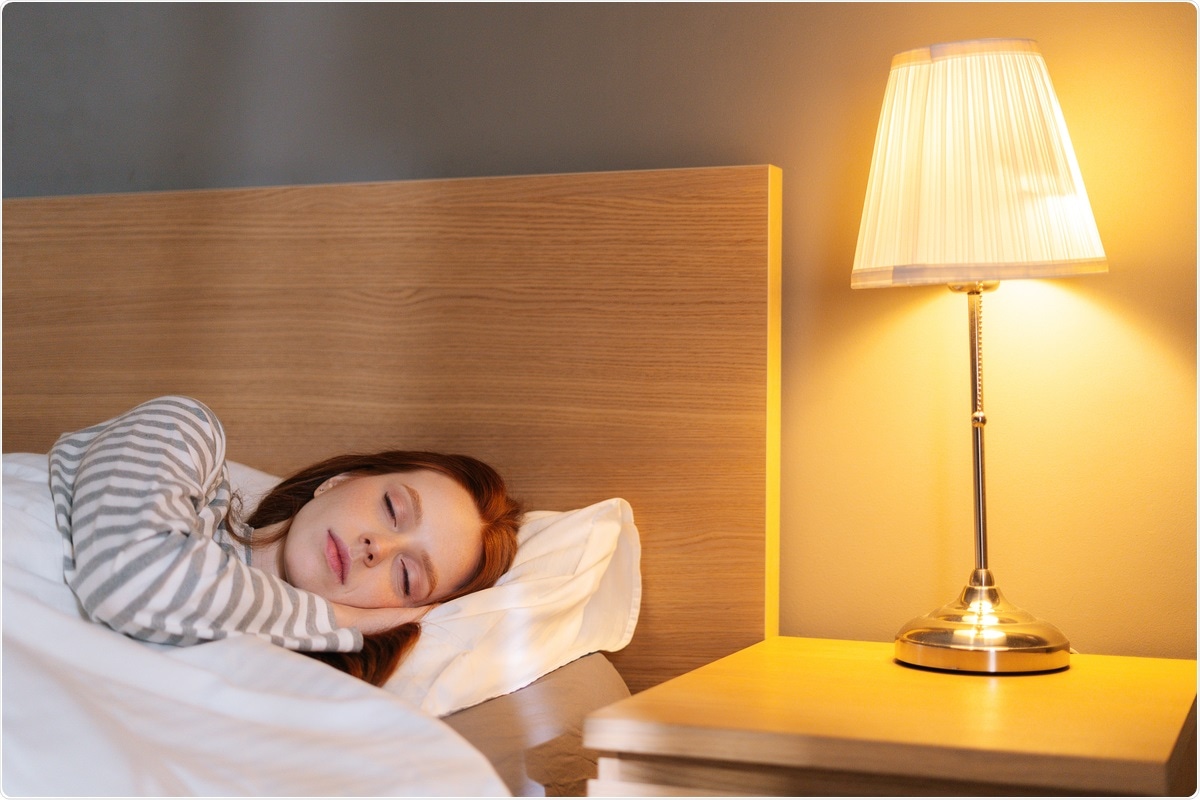Sleeping with lights on can be harmful to your health
In a recent PNAS study, researchers demonstrate that acute exposure to artificial light during nighttime sleep, even for one day, can increase heart rate and insulin resistance by activating the sympathetic nervous system.

Study: Light exposure during sleep impairs cardiometabolic function. Image Credit: Dikushin Dmitry / Shutterstock.com
Background
Acute exposure to artificial light during nighttime sleep is a common circumstance in industrial areas. Given the significance of the light-dark cycle in various physiological functions, acute light exposure during sleep is considered to be harmful to human health and wellbeing.
In this context, studies have shown an association between light exposure and metabolic abnormalities. It has been hypothesized that light-mediated metabolic alterations could be related to changes in normal sleep patterns. Alternatively, there is evidence showing that light-induced changes in the endogenous circadian rhythm might influence metabolic functions.
Light exposure can also alter autonomic nervous system functions by activating the sympathetic nervous system. This can result in sleep disturbances and metabolic disruption.
In the current study, scientists investigate whether acute exposure to light during nighttime sleep increases insulin resistance the next morning.
Study design
A total of 20 adult individuals participated in the study. Of the study participants, ten were randomly selected for the room light condition and the rest were selected for the dim light condition.
In the room light condition, the participants spent one night in dim light and the next night in room light. In contrast, participants in the dim light condition spent both nights in dim light.
The next morning, insulin resistance was measured using the homeostatic model of insulin resistance known as the Matsuda insulin sensitivity index, as well as an oral glucose tolerance test. The mechanism of light-induced metabolic changes was also assessed by considering how the light conditions impacted sleep quality, melatonin level, and sympathetic nervous system activity.
Important observations
A 15% induction of insulin resistance was reported in the room light condition participants, whereas a 4% reduction in insulin resistance was observed in participants who were exposed to dim light conditions. Regarding insulin sensitivity, a 16% reduction and a 3% induction were observed in room light and dim light conditions, respectively.
No significant difference in blood glucose levels was reported between room light and dim light conditions. However, a significant increase in insulin levels was observed in those exposed to room light conditions.
Analysis of sleep quality
The analysis of sleep quality conducted one week after the exposure revealed no difference in bedtime, sleep duration, and sleep efficiency between the groups.
The analysis of sleep macrostructure conducted during the experiment revealed that participants belonging to the room light condition spend more time in stage N2 and less time in slow-wave and rapid eye movement sleep. In contrast, no difference in sleep microstructure, otherwise known as slow oscillatory activity, was observed between the groups.
Importantly, no association was observed between nighttime changes in sleep macrostructure and day-time changes in insulin resistance.
Analysis of sympathetic activity
Heart rate, blood pressure, and heart rate variability were measured to determine activation of the sympathetic nervous system.
A significant induction in heart rate and reduction in heart rate variability during nighttime sleep was observed in participants belonging to the room light condition. A lower heart rate variability indicates a higher sympathovagal balance. Importantly, a significant association was observed between higher night-time sympathovagal balance and higher day-time insulin resistance.
Implications
The study findings indicate that light exposure during nighttime sleep can significantly alter cardiometabolic functions, primarily by increasing activation of the sympathetic nervous system. However, no impact of nighttime light exposure on melatonin levels was observed, thus indicating no significant involvement of circadian rhythms in light-induced cardiometabolic alterations.
The current study has special implications for individuals who live in urban and industrial areas where exposure to indoor and outdoor light is increasing widely. For better cardiometabolic health, these individuals may benefit from restricting light exposure at night, especially while sleeping.
- Mason, I. C., Grimaldi, D., Reid, K. J., et al. (2022). Light exposure during sleep impairs cardiometabolic function. PNAS. doi:10.1073/pnas.2113290119.
Posted in: Child Health News | Men's Health News | Medical Science News | Medical Research News | Women's Health News
Tags: Autonomic Nervous System, Blood, Blood Pressure, Cardiometabolic, Circadian Rhythm, Eye, Glucose, Heart, Heart Rate, Insulin, Insulin Resistance, Melatonin, Metabolism, Nervous System, Sleep

Written by
Dr. Sanchari Sinha Dutta
Dr. Sanchari Sinha Dutta is a science communicator who believes in spreading the power of science in every corner of the world. She has a Bachelor of Science (B.Sc.) degree and a Master's of Science (M.Sc.) in biology and human physiology. Following her Master's degree, Sanchari went on to study a Ph.D. in human physiology. She has authored more than 10 original research articles, all of which have been published in world renowned international journals.
Source: Read Full Article
